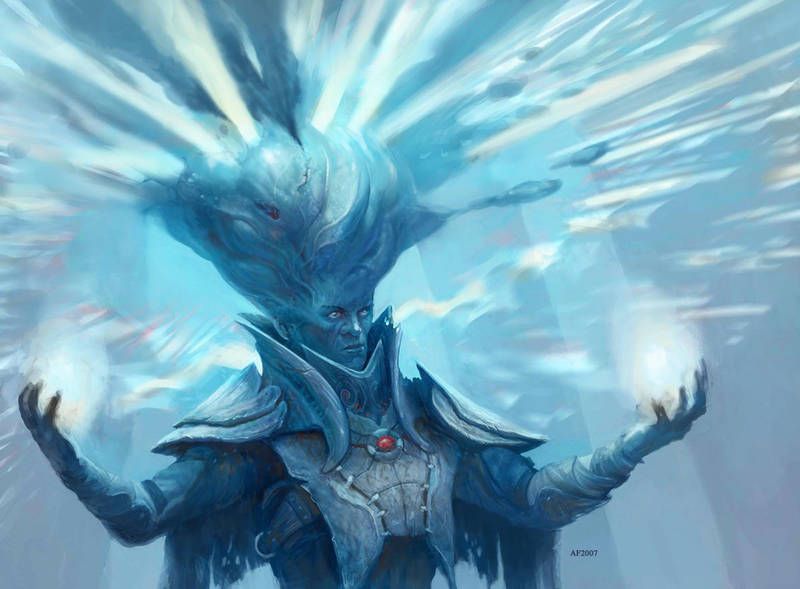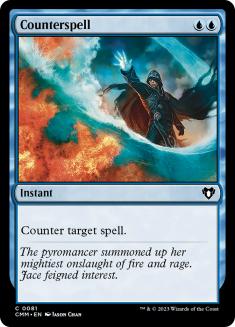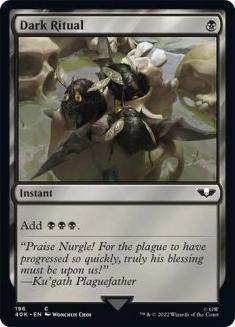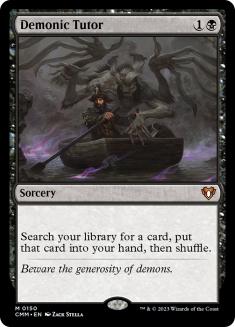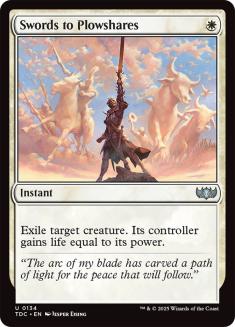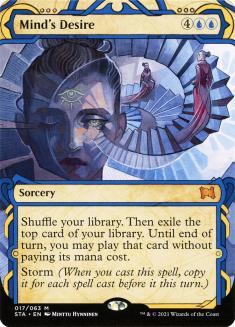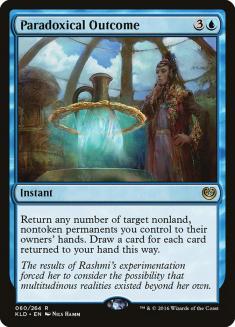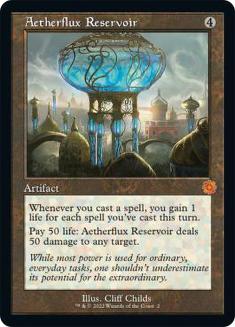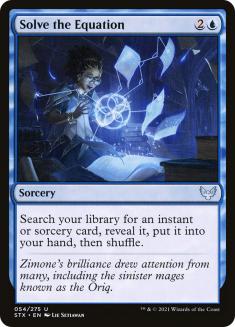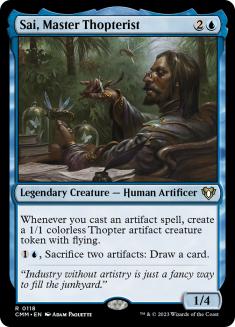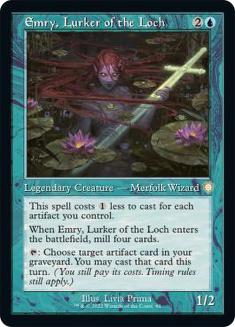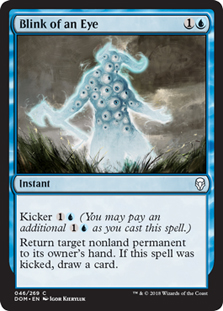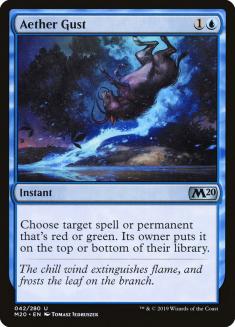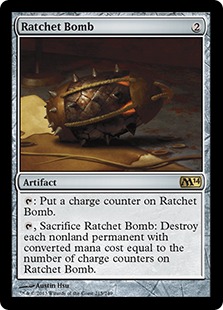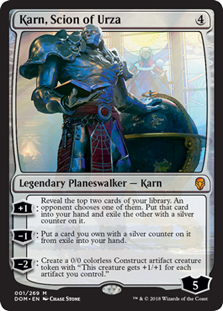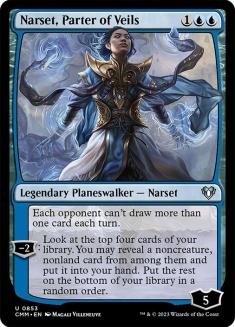There are certain cards that should never see the competitive light of day again. Newer cards have an obvious power creep attached, making many of the older spells look visibly weak, but there are some egregious outliers. The cards, and sometimes the mechanics themselves, were poorly developed and ruined the formats of old. Oko, Thief of Crowns is an obvious oversight, pushing way past the boundaries of acceptable battlefield interaction, but it’s no Time Spiral or Channel. This conversation, of what is acceptable and not acceptable from the olden days, is spurred by Strixhaven, which is bringing back a pile of broken spells from the archive right to the competitive scene.
The list of reprinted cards entering the Historic format is staggering. These Mystical Archive additions will fundamentally change the format in a way we have not seen, creating new archetypes, and demolishing what we thought were format staples. At first, I could not believe some of the spells I saw entering the fray, until they released which cards were immediately banned. That list is:
These were obvious removals, apart from Counterspell. I know the blue haters of the multiverse will say it’s too strong, but the two-mana disruption that blue-based control has at its disposal in the format is embarrassing. It would not fundamentally warp the format, but it would embolden a weakened archetype that desperately needs it. The list above is full of staples from Legacy, with two of them banned there as well. I knew these would not make the cut into Historic; however, some of the ones that made it through may be tougher to defend.
Storm is a mechanic that I wrote off long ago. The creators of the game know it’s a mistake, nearly at the level of Phyrexian mana. This mechanic has created unhealthy gameplay in the past, and even with more powerful cards printed in the last few years, I do not see that situation improving. Historic is ill-equipped to deal with the strength of Storm, especially when the team captain of the mechanic is unleashed with a strong cast of characters at its disposal.
Mind’s Desire is the best of the Storm bunch and has seen its fair share of bannings. On the surface, it’s a six-mana sorcery that requires a great deal of setup and some weaker cards to get the Storm count surging. This was never a problem a decade ago, with all the powerful artifact-based mana and the cheap cantrips being printed. I remember an Extended PTQ season where it was legal and players would use untap effects like Twiddle on a Gilded Lotus, producing a bunch of mana and casting Mind’s Desire at the end of the series. Things have significantly changed since then, but there are still plenty of ways to produce a high Storm count off mana produced by artifacts.
Creatures (10)
Lands (3)
Spells (47)

This is the first take on a Mono-Blue Storm deck in Historic that I’m excited to test in the moment Strixhaven drops on MTG Arena. There will be other decks that try to break the Storm mechanic — ones that possibly incorporate Tendrils of Agony or Grapeshot — but this attempt is the cleanest on paper. Mono-Blue Storm already had the elements in place, as some competitors tried to win just off Paradoxical Outcome and Aetherflux Reservoir in the past.
I have played decks in Historic that try to win off the pile of zero-mana artifacts, with a little assistance from Emry, Lurker of the Loch. There has always been something there, but it lacked the brute strength of an ancient evil, like Mind’s Desire. There are decks, like mono-blue trying to win with just Paradoxical Outcome and Aetherflux Reservoir, or my old Song of Creation attempt, that used these cheap artifacts and missed the consistency requirement. Mind’s Desire fixes the consistency issue by itself, giving these Storm-style decks exactly what they’ve been missing this whole time.
One of the messed-up things that Mind’s Desire does is hits another Mind’s Desire in the process. This is essentially game over, regardless of the rest of the shell involved. This is the reason I’m playing three copies of the expensive sorcery and may go to four eventually. It’s tough to fit the last one in, especially with the existence of a Strixhaven tutor that will be an all-star in all decks utilizing Mind’s Desire.
This is a three-mana Demonic Tutor in Mono-Blue Storm. There may be times where you need an artifact, but those will be rare outside of the combo turn. Therefore, there’s one copy of Whir of Invention, making Solve the Equation get any card in the deck while comboing off. The mana constraints are not an issue with Inspiring Statuary on the battlefield, which gives the deck that infinite mana feel. The deck uses it to turn on all sixteen cheap artifacts, as well as the tokens that Sai, Master Thopterist creates. It’s the best we can do without a bomb like Urza, Lord High Artificer, and it should easily do the trick. All this mana for spells gives Solve the Equation the liberty to fetch any card needed, cast that card, and proceed to win the game on the spot. Even with a Demonic Tutor effect like this, Mono-Blue Storm will produce games where the opponent watches helplessly as cards are drawn with Paradoxical Outcome, cards are played again, Mind’s Desire storm copies are resolving, and the excruciatingly long win eventually comes to its conclusion.
Mono-Blue Storm takes me back to my Ironworks days, well before the infinite combo was there. When I first formed this deck with Myr Retriever and no Pyrite Spellbomb, I would have my opponents frustratingly sit there while I took forever to resolve an Emrakul, the Aeons Torn. Even though Mono-Blue Storm has the win with Aetherflux Reservoir, it can take a while to get it resolved and executed. Like Ironworks of old, Mono-Blue Storm will have some resiliency built in when things don’t go according to plan.
Sai, Master Thopterist and Emry, Lurker of the Loch gives the deck some recovery alternatives when the combo is disrupted. Sai is a win condition on its own, producing a pile of flyers naturally and increasing that capability ten-fold with Paradoxical Outcome. Being able to produce armies off one card like this is a huge advantage for Mono-Blue Storm and makes it one of the most important cards of the deck.
Emry has built-in value, even when the gameplan is disrupted. Drawing cards from Chromatic Sphere, bringing back a lost Mox Amber for mana, or even returning the one Aetherflux Reservoir if destroyed, making this creature an essential piece of the deck. The advantage that most players would not catch right off the bat is its interaction with Brainstorm. Without a ton of deck manipulation, Emry is best friends with Brainstorm, milling the unwanted cards for the average cost of one mana. This combination will be looked over when the new format kicks off, but eventually people will realize how good Brainstorm is in any format where it’s legal.
Speaking of Brainstorm, it’s getting a lot of flak due to the lack of fetchlands in Historic. I wanted to take a moment to ease everyone’s mind that’s reading this and worries that it won’t be effective here, or elsewhere in other blue decks. Brainstorm will be the most played card from the Mystical Archive of Strixhaven, and it will be by a country mile. This interaction with Emry is one of many that will surface, but even without a Fabled Passage or some other way to manipulate, it will strengthen every deck that can cast it. Just because Historic decks cannot cast a Brainstorm on Turn 2, fetch, then play a Thoughtseize with their second mana, does not make it weak. Comparing broken cards to their peak performance in older formats is silly and Brainstorm will quickly prove that in Historic.
The rest of the deck is full of cards that were legal before Strixhaven. I maximized the zero-mana artifacts because reducing that number is asking for trouble. In addition to Mox Amber, Ornithopter, and Tormod’s Crypt, Chromatic Sphere rounds out the cheap options. Moving up the mana curve is where you’ll find the engine behind the deck, Inspiring Statuary, that gives each of these artifacts mana-producing power that will provide the means for a big Mind’s Desire and/or Paradoxical Outcome to draw through the deck, hitting them with lethal damage from Aetherflux Reservoir. The deck gets more creative in the sideboard, where additional defense is offered, and a backup plan is provided.
There are plenty of answers to disruption in a blue-based sideboard. Blink of an Eye, Aether Gust, and Rachet Bomb all provide some battlefield interaction in case something slips through. The traditional blue disruption is here as well, with Mystical Dispute and Pact of Negation adding to the mix. Having Solve the Equation in the maindeck strengthens these options as well, and being the sole reason I added one Pact of Negation. There will be turns, prior to combo execution, where we can tutor up the one free counterspell. This flexibility extends to getting a Blink of an Eye for a problematic permanent that’s preventing the combo, making Solve the Equation a vital piece of the sideboard plan.
Ratchet Bomb is the catchall for Mono-Blue Storm. It’s an artifact, so it can assist in providing more mana from Inspiring Statuary, as well as producing Thopters with Sai. There’s also a pleasant interaction with it and Emry for the games that get a bit grindy from the start. Not every game for combo decks like these are by the book and clean, which is why Ironworks was so strong. The resiliency of it mirrors that of Mono-Blue Storm on paper, with plenty of interaction that can be had while the combo sits back and patiently waits for its turn.
Karn, Scion of Urza, Narset, Parter of Veils, and the third Sai round out the alternative gameplan that we must be ready for. Karn is a very powerful planeswalker that has seen a similar role in decks like these over the years. It draws cards and makes giant Constructs as the game progresses, giving Mono-Blue Storm a nice creature-based path to victory. This, in conjunction with Sai’s Thopters, makes the opponent focus on not dying to a robust battlefield instead of the deadly combo. I thought about using Karn, the Great Creator instead to assist with tutoring combo pieces and giving a weaker aggressive element, but Karn, Scion of Urza plays this role too well to cut. It’s likely that I sideboard this in every match in anticipation for incoming hate, due to its ability to change the opponent’s play patterns that make the combo itself more viable.
Narset, Parter of Veils is the planeswalker that no blue mage can leave behind. It has an innate ability that stifles opponents’ card draw while producing valuable combo pieces. It also provides a target for attack that buys any combo deck using it more time to setup. This is another card that I have considered adding to the maindeck with the amount of utility it provides Game 1, but there isn’t room with the current build.
That leads to the biggest issue with the combo sideboard — providing the best sideboarded game strategy while not diluting the combo too much. There’s no way around cutting some consistency from a combo deck when bringing in cards for Game 2 and 3, but the art of doing it effectively is difficult. An artifact or two, Brainstorm, Solve the Equation, and Emry must be cut for the deck to have a better shot against disruption.
I look forward to fine tuning this process in battle, while showcasing a mechanic that should have never returned to competitive play, against my Historic opponents soon.

